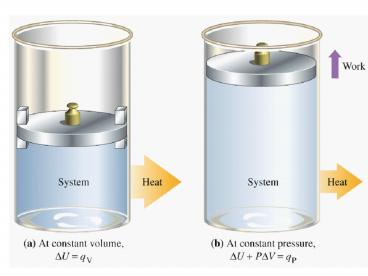ideal gas 0, Joules law - PowerPoint PPT Presentation
1 / 22
Title:
ideal gas 0, Joules law
Description:
ideal gas =0, Joules law. Hydrostatic Balance in the Vertical. vertical pressure force ... A barograph continually. records air pressure. through time ... – PowerPoint PPT presentation
Number of Views:384
Avg rating:3.0/5.0
Title: ideal gas 0, Joules law
1
(No Transcript)
2
ideal gas 0, Joules law
3
Hydrostatic Balance in the Vertical
- vertical pressure force gravitational force
- - (dP) x (dA) ? x (dz) x (dA) x g
- dP -?gdz
- dP/dz -?g
The hydrostatic balance !!
(from Climate System Modeling)
4
What Does Hydrostatic Balance Tell Us?
- The hydrostatic equation tells us how quickly
air pressure drops wit height. - ?The rate at which air pressure decreases with
height (?P/ ?z) is equal to the air density (?)
times the acceleration of gravity (g)
5
Hydrostatic Balance and Atmospheric Vertical
Structure
- Since P ?RT (the ideal gas law), the hydrostatic
equation becomes - dP -P/RT x gdz
- ? dP/P -g/RT x dz
- P Ps exp(-gz/RT)
- P Ps exp(-z/H)
- The atmospheric pressure decreases exponentially
with height
(from Meteorology Today)
6
Aneroid barometer (left) and its workings (right)
A barograph continually records air pressure
through time
7
The Scale Height of the Atmosphere
- One way to measure how soon the air runs out in
the atmosphere is to calculate the scale height,
which is about 10 km. - Over this vertical distance, air pressure and
density decrease by 37 of its surface values. - If pressure at the surface is 1 atmosphere, then
it is 0.37 atmospheres at a height of 10 km, 0.14
(0.37x0.37) at 20 km, 0.05 (0.37x0.37x0.37) at 30
km, and so on. - Different atmospheric gases have different values
of scale height.
ESS55 Prof. Jin-Yi Yu
8
A Mathematic Formula of Scale Height
temperature
gas constant
gravity
scale height
molecular weight of gas
- The heavier the gas molecules weight (m) ? the
smaller the scale height for that particular gas - The higher the temperature (T) ? the more
energetic the air molecules ? the larger the
scale height - The larger the gravity (g) ? air molecules are
closer to the surface ? the smaller the scale
height - H has a value of about 10km for the mixture of
gases in the atmosphere, but H has different
values for individual gases.
9
Temperature and Pressure
- Hydrostatic balance tells us that the pressure
decrease with height is determined by the
temperature inside the vertical column. - Pressure decreases faster in the cold-air column
and slower in the warm-air column. - Pressure drops more rapidly with height at high
latitudes and lowers the height of the pressure
surface.
(from Understanding Weather Climate)
10
(No Transcript)
11
(No Transcript)
12
(No Transcript)
13
Air Parcel Expands As It Rises
- Air pressure decreases with elevation.
- If a helium balloon 1 m in diameter is released
at sea level, it expands as it floats upward
because of the pressure decrease. The balloon
would be 6.7 m in diameter as a height of 40 km.
(from The Blue Planet)
14
What Happens to the Temperature?
- Air molecules in the parcel (or the balloon)
have to use their kinetic energy to expand the
parcel/balloon. - Therefore, the molecules lost energy and slow
down their motions - ? The temperature of the air parcel (or balloon)
decreases with elevation. The lost energy is used
to increase the potential energy of air
molecular. - Similarly when the air parcel descends, the
potential energy of air molecular is converted
back to kinetic energy. - ? Air temperature rises.
15
Dry Adiabatic Lapse Rate
16
Dry Adiabatic Lapse Rate
(from Meteorology Understanding the Atmosphere)
ESS55 Prof. Jin-Yi Yu
17
(No Transcript)
18
- Convection
- Free convection (local heating)
19
Isobar
- It is useful to examine horizontal pressure
differences across space. - Pressure maps depict isobars, lines of equal
pressure. - Through analysis of isobaric charts, pressure
gradients are apparent. - Steep (weak) pressure gradients are indicated by
closely (widely) spaced isobars.
20
(No Transcript)
21
clouds
22
(No Transcript)































